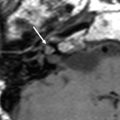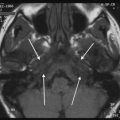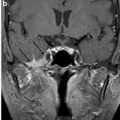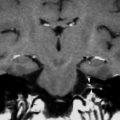© Springer-Verlag Berlin Heidelberg 2014
Marc Lemmerling and Bert De Foer (eds.)Temporal Bone ImagingMedical Radiology10.1007/174_2014_1026Temporal Bone Imaging Techniques
(1)
Department of Radiology, AZ St-Lucas Hospital, Groenebriel 1, 9000 Gent, Belgium
(2)
Department of Radiology, GZA Hospitals Sint-Augustinus, Oosterveldlaan 24, 2610 Wilrijk, Belgium
Bert De Foer
Barbara Smet
Abstract
Multi-slice CT and Cone Beam CT are actually both used to image the temporal bone. Two completely different MR protocols are used to respectively image the inner ear and middle ear.
1 CT Techniques for Temporal Bone Imaging
Multi-slice CT (MSCT) has been used for many years to image the temporal bone. However, the last couple of years Cone Beam CT (CBCT) is taking over that role.
1.1 CBCT of the Temporal Bone
CBCT uses a rotating gantry on which an X-ray tube and detector is attached. A cone-shaped X-ray beam is directed through the middle of the temporal bone onto a two-dimensional X-ray detector. Because CBCT uses the entire FOV of the two-dimensional X-ray detector, only a single 360° gantry rotation is necessary to acquire a 3D-volumetric data set. Of this data reconstructions can be made in any desired plane.
The advantages of CBCT over MSCT are the shorter examination time, high spatial resolution, and low radiation dose. It is also less sensitive for metallic and beam hardening artifacts because image acquisition is based on conventional radiographic images. The most important disadvantage of CBCT is its high sensitivity for motion artifacts because the patient has to hold the head perfectly still during the acquisition time of approximately 40 s.
Stay updated, free articles. Join our Telegram channel

Full access? Get Clinical Tree








